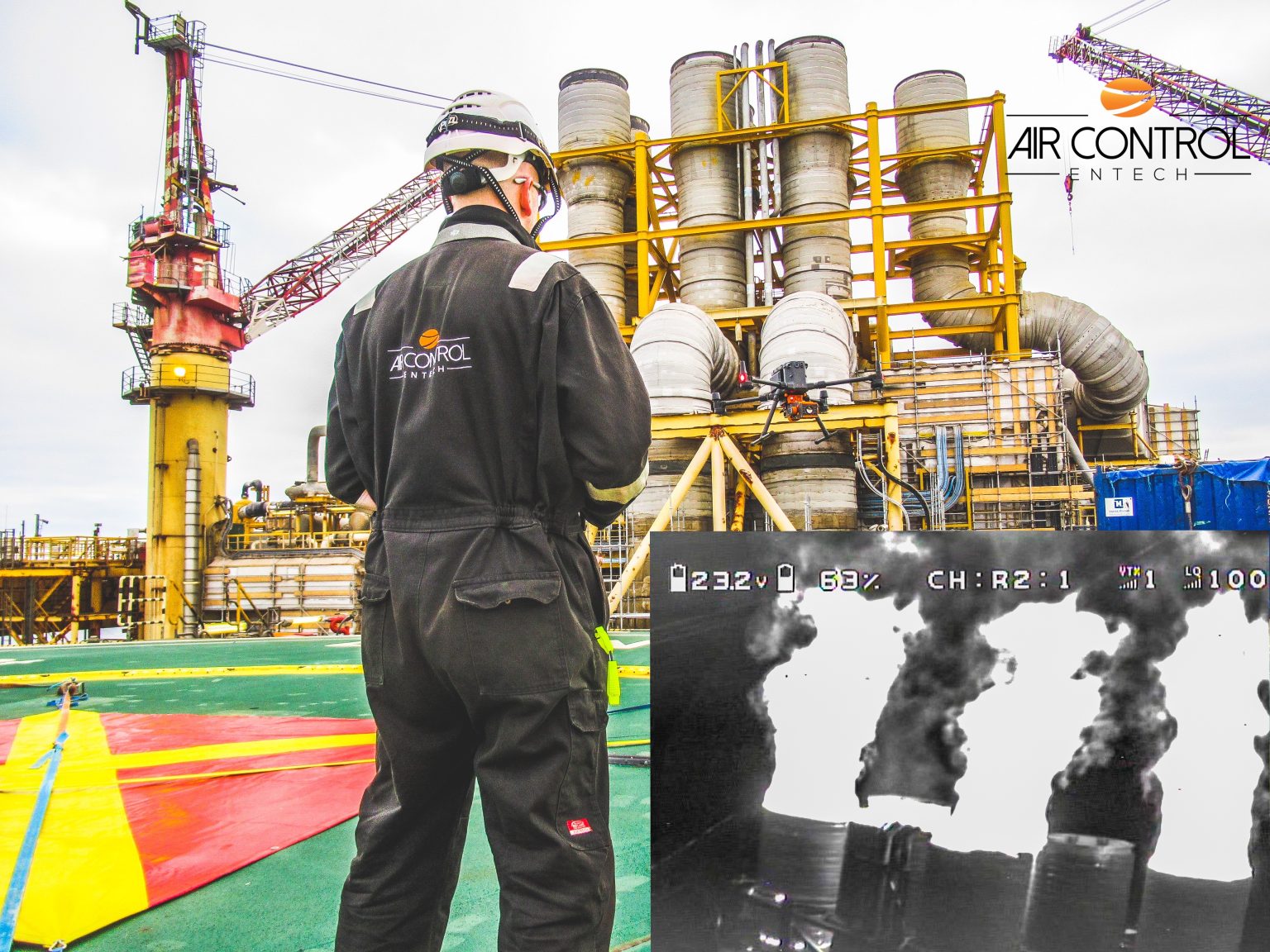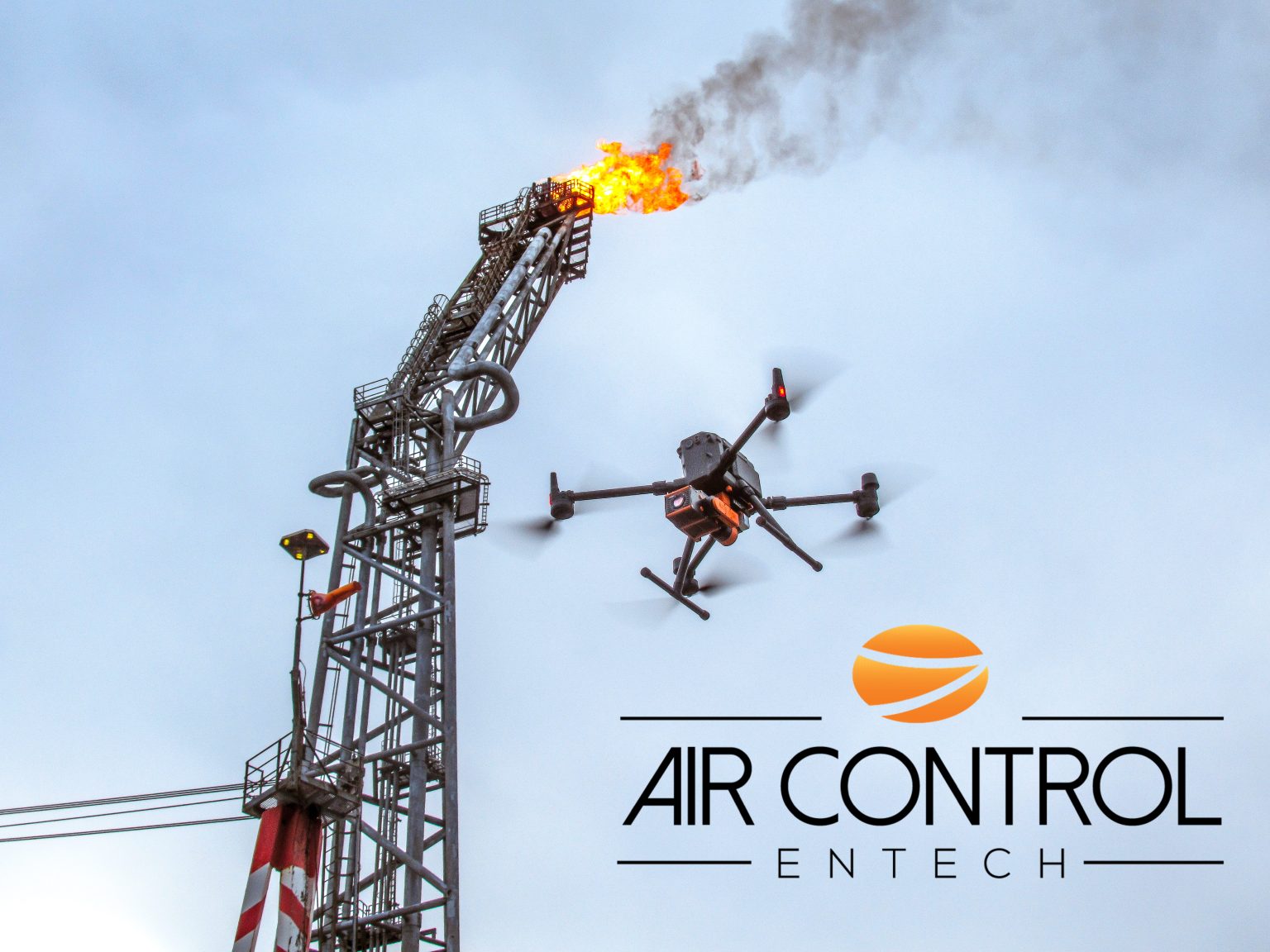 Contact ACE
Contact ACE
Latest News
What Are The Advantages of Using Optical Gas Imaging from Drones Offshore
10 February 2023


Offshore oil and gas operators are constantly searching for ways to improve safety and efficiency while reducing costs. One area that has seen recent advances is the use of drones for optical gas imaging (OGI). OGI allows operators to quickly and easily detect, quantify, and diagnose leaks from a safe distance. This technology can be especially helpful in hard-to-reach or dangerous areas offshore. In this blog post, we’ll take a look at some of the advantages of using drones for OGI offshore.
What is optical gas imaging (OGI)?
Optical gas imaging (OGI) is a powerful technology used in the oil and gas industry for leak detection and inspection. OGI captures high-resolution images of otherwise invisible emissions to detect any leaks that could be hazardous to the environment or nearby communities. OGI inspects using drones and robotics, allowing for safer, faster, and more cost-effective inspections than traditional methods. OGI can also be used at night with infrared capabilities, granting it access to areas not available during the day. OGI has increased safety protocols in the oil and gas industry by enabling quick and accurate detection of gas leaks while keeping workers safe from harm’s way.

How can OGI from drones be used offshore?
Oil and gas inspections offshore are an integral factor to ensure that operations run smoothly, efficiently, and safely. Recent advances in drone technology have allowed for Oil and Gas Inspections (OGI) from drones to be used offshore instead of traditional methods, presenting a wide range of benefits such as safer environments for employees, greater access in hard-to-reach areas of structures, cost savings due to reduced man hours, and the ability to collect data more comprehensive than ever before. By performing OGI surveys with drones offshore, operators can accurately inspect oil rigs quickly and mitigate potential risks in hazardous conditions. In addition, the use of drones significantly reduces the time it takes to secure certifications which often incur long turnaround times when done manually. With OGI from drones now being used offshore, companies can improve safety standards while ensuring improved reliability and security across oil and gas installations.
What are the advantages of using OGI from drones offshore over other methods?
The use of Optical Gas Imaging (OGI) from drones provides a number of advantages over traditional methods when used offshore. OGI uses infrared technology to scan for gas leaks in areas that are often hard to access by foot, making it more efficient and less time pressured than other inspection methods. In addition, due to its ability to fly at various heights with live video streaming, OGI from drones is capable of generating comprehensive data gathered from an efficient single pass-over of the entire site. This ensures improved accuracy of inspections and quick detection of any potential hazards, allowing them to be immediately resolved. OGI from drones is also significantly more cost effective than similar methods such as manned aircraft or satellite flights and can save lives by providing an extra margin of safety.

How can OGI from drones help improve safety and efficiency offshore?
Drone technology, also known as unmanned aerial vehicles (UAVs), is increasingly being utilized to increase safety and efficiency in the offshore industry. Through the use of Optical Gas Imaging (OGI) from drones, offshore workers can quickly detect potential sources of volatile organic compounds that may be hazardous to their health or the environment. By providing an upfront view of assets and facility components, operators can proactively address any potential risks before they become more serious issues. OGI from drones can also be used to inspect pipelines, valves, and even measurement devices quickly, accurately and cost effectively. By leveraging drone-based OGI technology, companies are able to get real time data while reducing manpower requirements since flying optical gas imaging missions no longer require personnel in a helicopter or on a boat. With faster response times in identifying fault gases and man hours saved, OGI from drones offer major advantages for improving safety and efficiency in all manner of offshore operations.
Are there any disadvantages to using OGI from drones offshore?
While Optical Gas Imaging (OGI) using drones offshore has the potential to revolutionize oil and gas operations, there are a few associated disadvantages. One of the main issues is cost. Although the initial outlay may be relatively affordable, the recurring costs to maintain the equipment and software necessary to operate a drone can add up quickly. Additionally, challenges of operating in an offshore environment can prove difficult for inexperienced drone pilot teams. With strong ocean winds and waves, these conditions can make it difficult for proper navigation and flyability of the drone in service. Other challenges include maintaining sufficient battery power during flying session and finding suitable areas with adequate line sight from where to launch the drone, which could further impact OGI program efficiency.

Optical gas imaging is a useful tool that can be used to detect and monitor methane leaks. It has many advantages over other methods, such as being able to survey large areas quickly and accurately. Additionally, OGI from drones can help improve safety and efficiency offshore by reducing the need for workers to enter hazardous environments. While there are some disadvantages to using this method, overall it is an effective way to monitor methane leaks. If you would like to learn more about using OGI from drones offshore and how Air Control Entech can support methane and emissions reduction then please contact us!


